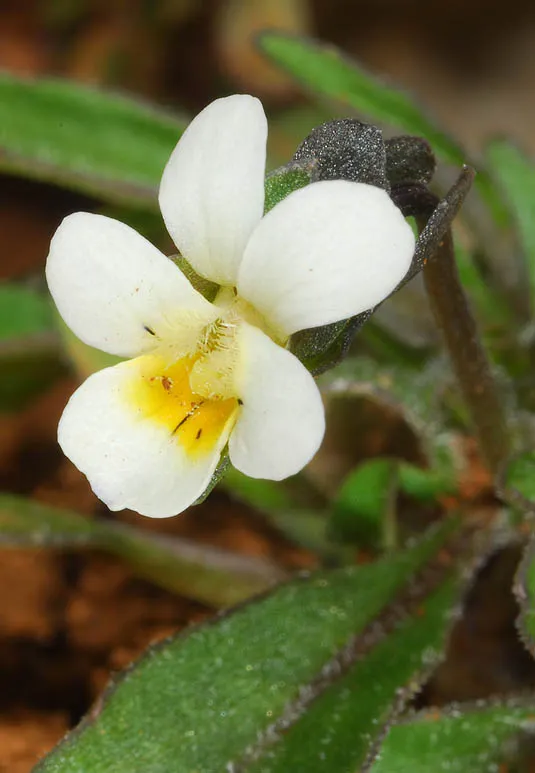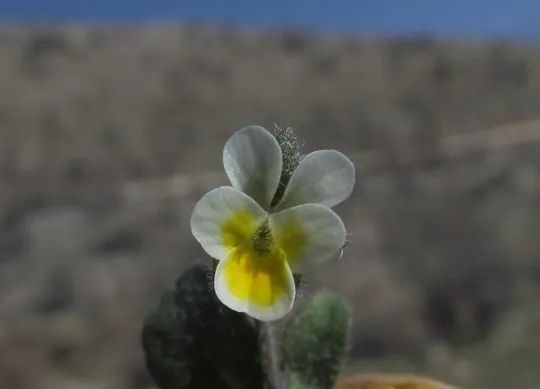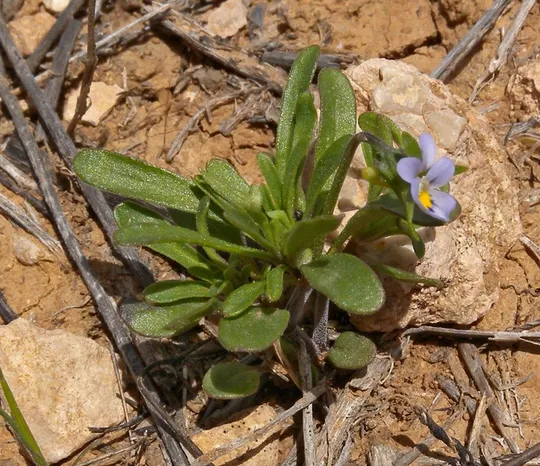Viola kitaibeliana
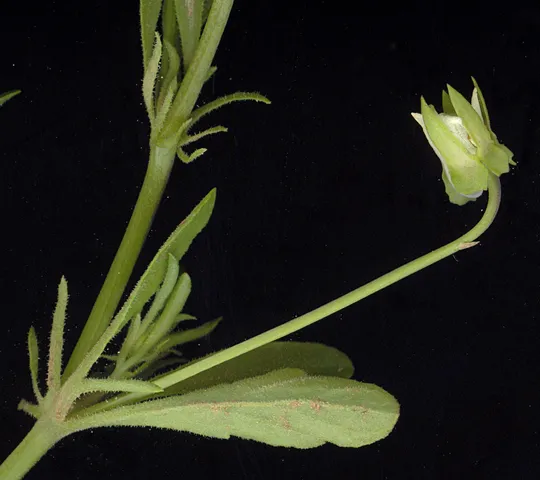
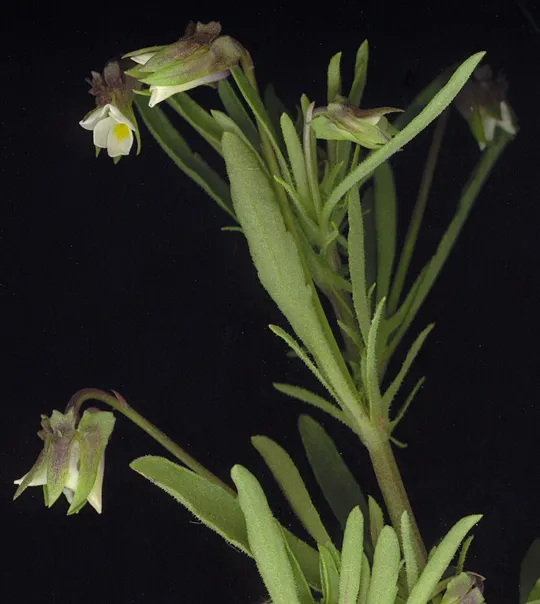
Viola occulta grows in the
southern Judean Mountains at a single site near Mitspe Ya'ir, where it was
found by Oz Golan in 2003. The existence of the plant in the country was in
doubt and for many years, the only information available was from the literature.
The Flora Palaestina quotes Dinsmore (1932) who observed the species in the
Judean Mountains and Barbie (1882) who found it in Samaria. Danin (2004) notes it
from Samaria, but no evidence of this was found in the herbarium. It is
possible that it grows on Ma'on Ridge in southern Mount Hebron at about three sites.
Montane valley lands and edges of non-irrigated fields
in the transition zone at altitudes above 800 meters.
The genus Viola includes 400 species found mainly
in northern temperate regions, but its distribution reaches the Andes Mountains
in South America. Most of the species in the genus are herbaceous perennials.
The better-known ones are the alpine species that have large flowers in a wide
variety of colors. There are species whose late flowers are cleistogamous, i.e.
small flowers that do not open and reproduce by self-pollination. The regular
flowers produce nectar in the small spur that is hidden or protrudes a bit behind
the calyx. The opening of the corolla tube is known for its decorative colored
dots and stripes – which pollination studies believe to be nectar paths. In
some Viola species, the seeds have a fatty tissue that attracts ants
(elaisome). In southern Europe and towards the Mediterranean region, tiny
annual Viola species evolved as an adaptation to a two season arid
climate. Four such species grow in the Levant and in Israel: V. modesta, the most common, which grows in mountains, V.
parvula, found only on the Hermon and V. occulta and V. pentadactyla,
which are very rare, and survived only in the southern Judean Mountains. V.
parvula is a tiny annual species, close to Viola
occulta, which was recently found as new species for the Hermon. It is 5 cm
tall and covered with relatively long white sparse hairs, which point diagonally
downward. The hairs appear mainly on the stem below the nodes from which the
flowers emerge and on the calyx. The pedicel is glabrous and longer than the
leaf from whose axil it emerges. The calyx is the same length as the flower or
is slightly longer. The spur is shorter than the calyx and hidden by the calyx appendages.
The flower is cream colored, as in V. modesta.
The stipules are divided and have two lateral lobes. In the Flora of Turkey,
the species is considered a synonym of V. occulta.
In the montane Hermon forest, at altitudes of 1300-1451
meters there are V. modesta populations and among
them plants that fit the description of V. occulta: the flower has a stronger yellow color than the typical cream color
of V. modesta and the stipules are divided
into narrow lobes unlike V. modesta whose
stipules are entire. The Flora of Turkey stresses that there are transitional
forms between the two species; consequently, we do not believe that we can identify
an additional species besides V. modesta on
the Hermon. In contrast, on the Ma'on Ridge and in the Shara Mountains in Edom
"clean" populations of Viola occulta
were found which were not mixed with V. modesta. In the Mitspe Ya'ir area on the Ma'on Ridge the V. occulta
grew together with V. modesta and there
were no transitional forms between them; the color of the V. pentadactyla flower is azure and its spur protrudes behind the
calyx, whereas the color of V. occulta is creamy
white and it has a larger flower.
·
Viola occulta grows with
certainty at only one site, where it was recently found.
·
The habitat of cultivated lands and field
edges in the high transition zone in the southern Judean Mountains is endangered
due to the transition to intensive agriculture with deep plowing and pesticide
use.
·
V. occulta is not protected in a nature reserve.
·
V. occulta has a broad distribution and is
probably not globally endangered.
The distribution,
taxonomy and speciation of annual Viola species and their ecological relationships should be
studied. This is very important for the study of the evolution of annual plants
in Israel in the Holocene and for understanding the development of the immense
diversity of annual species. Several valleys along the Ma'on region should be
considered as potential nature reserves dedicated to the two Viola species
that grow there and are critically endangered. Efforts should be made to
acclimatize a V. occulta population in
the Jerusalem area.
Viola occulta is found in southern Jordan, Israel,
Syria, Turkey, Iran, Trans-Caucasus. Some people note this species from Cyprus.
Viola occulta is a small annual
plant that grows on only one site in southern Mount Hebron. The species is
threatened by extinction in a habitat that is endangered by the transition from
traditional to intensive agriculture.
Current Occupancy Map
| 1000 squre meter pixel | 5000 squre meter pixel | 10000 squre meter pixel | |
|---|---|---|---|
| number of observations | 0 | 0 | 0 |
| in total pixels | 0 | 0 | 0 |
| Family | Violaceae |
| Classification | On the endangered species list |
| Ecosystem | High Semi-Steppe |
| Chorotype | Irano -Turanian |
| Conservation Site | Mitspe Ya'ir |
| Rarity |
1
6
6
|
|---|---|
| Vulnerability |
0
0
4
|
| Attractiveness |
0
0
4
|
| Endemism |
0
0
4
|
| Red number |
1
3.7
10
|
| Peripherality | N |
| IUCN category | DD EW EX LC CR EN VU NT |
| Threat Definition according to the red book | Vulnerable |
 Based on:
Based on:
